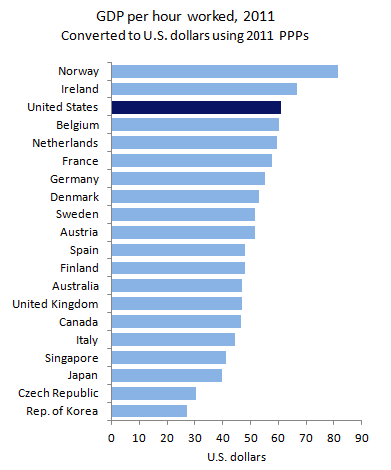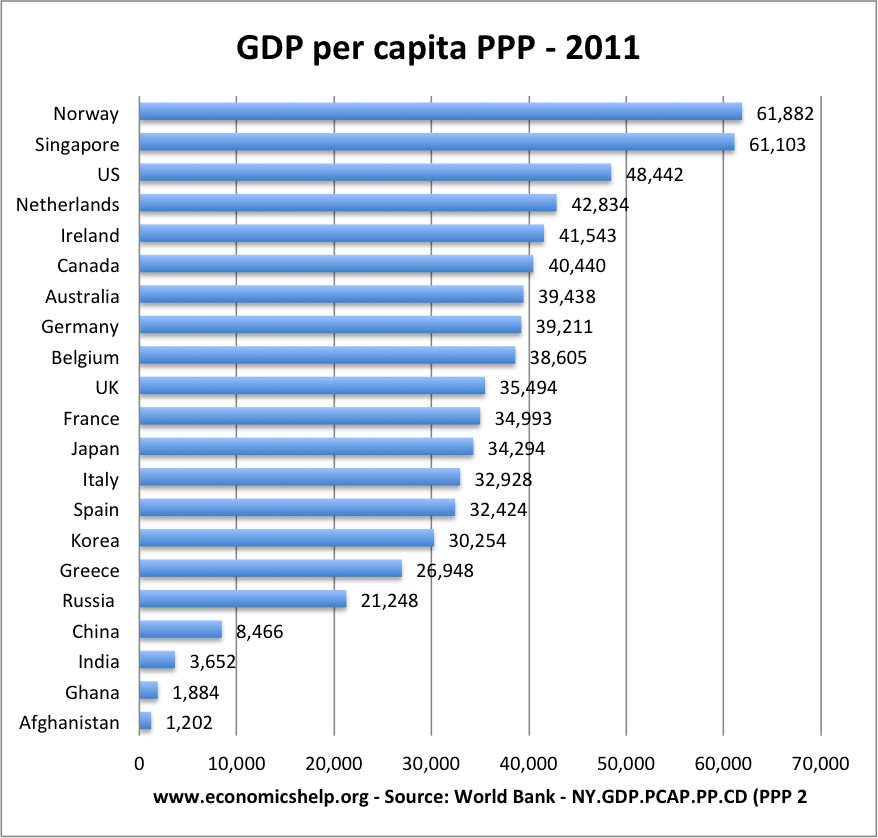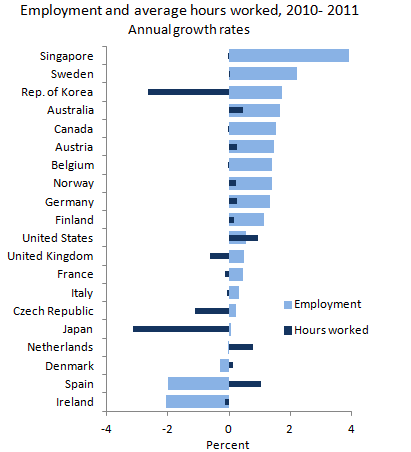Readers Question: Which is more useful for determining living standards – GDP/capita and GDP/working hour
- GDP per capita measures national income per population
- GDP per working hour measures national income / total hours worked in the economy.

source: US Bureau of labour statistics
GDP per capita would probably be the first measure to look at. It is the most obvious reflection of national income per person.
GDP per hours worked is also useful for determining the productivity of an economy. Though it depends what determines the number of hours worked – For example, is a low number of hours (and high GDP per hours worked) due to unemployment or greater efficiency leaving more time for leisure?
GDP / working hour could be inflated if there is a rapid drop in employment and hours worked. For example, if unemployment increased by 1 million because firms became much more strict in getting rid of surplus labour (causing structural unemployment), this would cause an increase in labour productivity and higher GDP per working hour. But, the rise in unemployment is a clear drop in living standards.
On the other hand, you could argue that if you have to work 30 hours a week to earn $400 a week. This is a much better living standard compared to a country where you are forced to work 50 hours a week to earn $400 a week.
If a country suddenly became more much productive and efficient (i.e. produced the same output in 35 hours working week, rather than 40 hours per week), this is an improvement in living standards (more leisure time). But, GDP per capita wouldn’t measure this change.
This is one limitation of comparing GDP per capita statistics is that it doesn’t take into account the number of hours worked.

For example, there was a time when Japan had a very high living standard, but the average hourly week – was also very high. Workers were pushed with long hours.
From a personal point of view, I’d rather live in a country with a lower GDP per capita and more leisure time. So GDP per hours worked is also important to look at.

Source: US Bureau of labour statistics
Interestingly Japan has seen a sharp fall in the amount of hours worked between 2010-11. This helped a stronger growth in GDP per hours worked (3% 2010-11)
Example of Comparison between France and US
An example of comparing France and US in 2008 – using the two different measures GDP per capita and GDP per hours worked.
Ratio – France to the US
- GDP per capita: 0.731
- GDP per hour worked: 0.988
- Employment as a share of population: 0.837
- Hours per worker: 0.884
- Source: Krugman GDP per Capita (NY-Times)
What does this mean?
- If we look at the US, GDP per capita is significantly higher than France. France GDP is only 73% of total US GDP per capita.
- However, if we look at GDP per hour worked, the two countries have essentially the same GDP per hour worked.
This is due to two factors
- Lower employment / higher unemployment in France
- Shorter working week in France / earlier retirement.
In other words, looking at GDP per hours worked, France is in a much better situation than GDP per capita.
- Part of this better performance in GDP per hours worked is due to good factors – shorter working week, more leisure time.
- But, part of this relative better performance in GDP per hours worked is due to bad factors – higher unemployment.
So French workers are roughly as productive as US workers. But fewer Frenchmen and women are working, and when they work, they work fewer hours.
